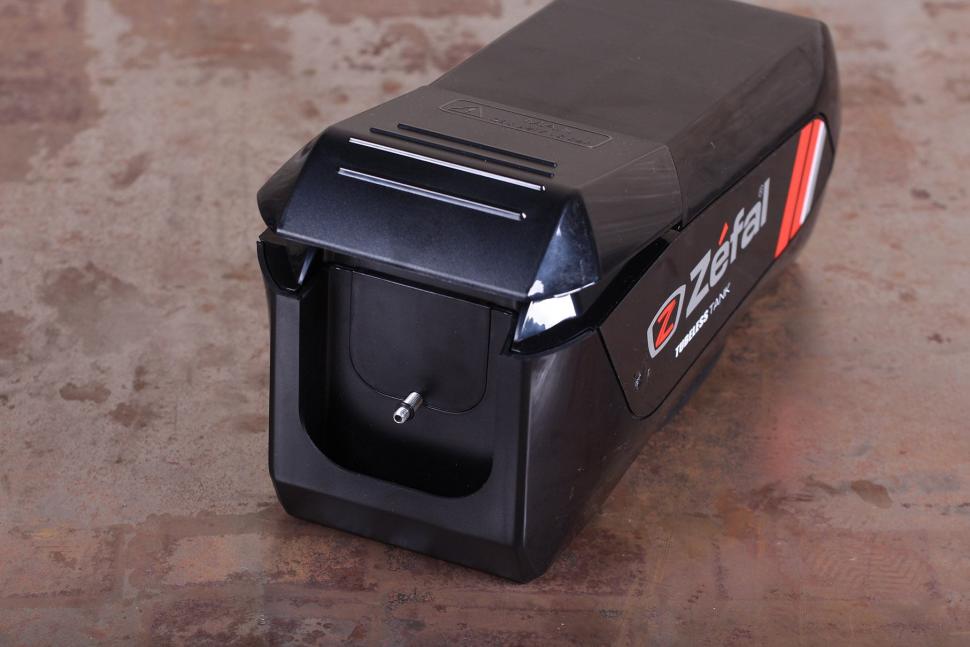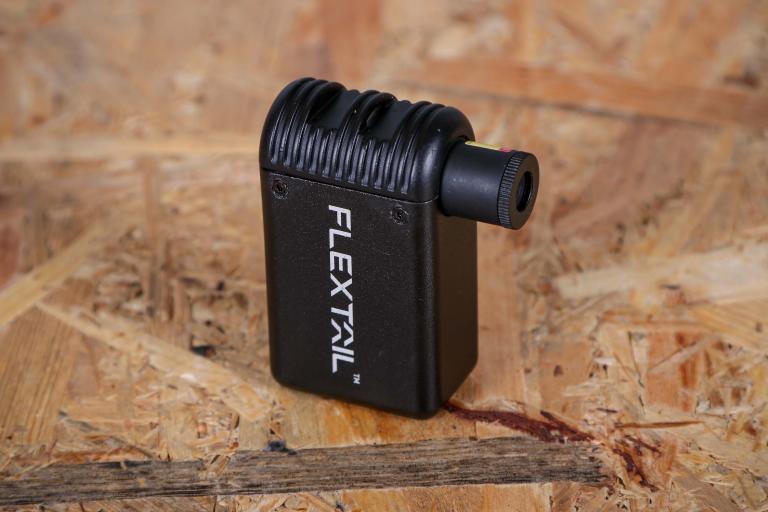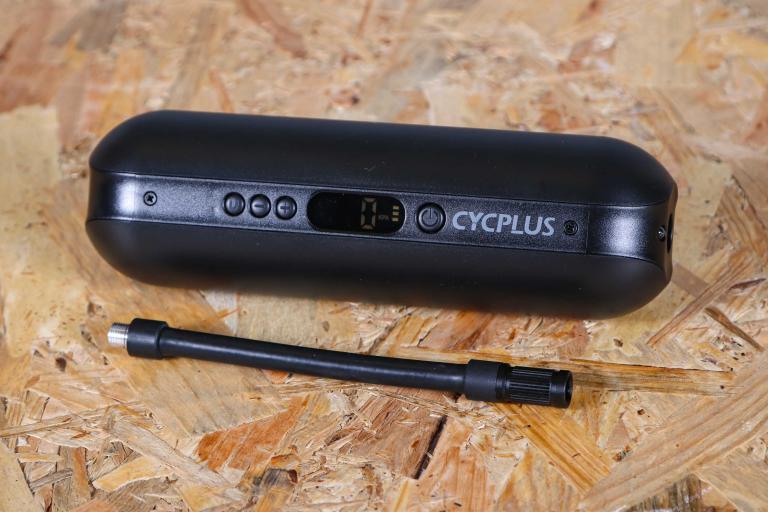- News
- Reviews
- Bikes
- Accessories
- Accessories - misc
- Computer mounts
- Bags
- Bar ends
- Bike bags & cases
- Bottle cages
- Bottles
- Cameras
- Car racks
- Child seats
- Computers
- Glasses
- GPS units
- Helmets
- Lights - front
- Lights - rear
- Lights - sets
- Locks
- Mirrors
- Mudguards
- Racks
- Pumps & CO2 inflators
- Puncture kits
- Reflectives
- Smart watches
- Stands and racks
- Trailers
- Clothing
- Components
- Bar tape & grips
- Bottom brackets
- Brake & gear cables
- Brake & STI levers
- Brake pads & spares
- Brakes
- Cassettes & freewheels
- Chains
- Chainsets & chainrings
- Derailleurs - front
- Derailleurs - rear
- Forks
- Gear levers & shifters
- Groupsets
- Handlebars & extensions
- Headsets
- Hubs
- Inner tubes
- Pedals
- Quick releases & skewers
- Saddles
- Seatposts
- Stems
- Wheels
- Tyres
- Health, fitness and nutrition
- Tools and workshop
- Miscellaneous
- Buyers Guides
- Features
- Forum
- Recommends
- Podcast
review
£64.99
VERDICT:
Underwhelming performance and less robust than some similarly priced units – not among the best available
Weight:
1,460g
Contact:
At road.cc every product is thoroughly tested for as long as it takes to get a proper insight into how well it works. Our reviewers are experienced cyclists that we trust to be objective. While we strive to ensure that opinions expressed are backed up by facts, reviews are by their nature an informed opinion, not a definitive verdict. We don't intentionally try to break anything (except locks) but we do try to look for weak points in any design. The overall score is not just an average of the other scores: it reflects both a product's function and value – with value determined by how a product compares with items of similar spec, quality, and price.
What the road.cc scores meanGood scores are more common than bad, because fortunately good products are more common than bad.
- Exceptional
- Excellent
- Very Good
- Good
- Quite good
- Average
- Not so good
- Poor
- Bad
- Appalling
Road tubeless is becoming more and more popular, with a significant percentage of the wheels we've had through lately being tubeless compatible. Some combinations of wheels and tyres inflate quite easily with just a track pump, others are much less willing, hence the fact that you can now buy a bunch of devices like this Zefal Tubeless Tank to help with the process. Unfortunately, this one isn't among the best out there.
We recently did a video group test which pitted this against some rival devices, and Liam found that it got a 25mm road tyre to seat easily but struggled with larger tyres. I've mostly been using 30mm Schwalbe S-One tyres and my experience matched Liam's – the pressure wasn't delivered as fast as it would be with a compressor, and the tyre was consequently often more reluctant to seal against the Hunt wheels I was using.
> Find your nearest dealer here
The Zefal Tubeless tank is a simple device, really – it's an aluminium cylinder concealed in a plastic housing. There's a port on one end to which you connect your track pump to pressurise it. You'll want to make sure that you've securely fitted the pump to the tank inlet because – bizarrely – Zefal hasn't opted to fit a valve here. So if your pump head pops off the tank inlet, it will dump all its pressure out and you'll have to start pumping again.
On the underside is a hose coiled up, which you connect to the tyre valve. It uses a simple push-fit with a rubber seal onto the valve stem. The most notable detail on the device is probably the large pedal that is used to open the output and inflate the tyre. Other tubeless tanks use screw valves or levers, but this system leaves both hands free as it is easily operated by foot. Is that a significant advantage? I'm not convinced.
Zefal recommends inflating to 10 bar (145psi) although the tank can cope with as much as 16 bar (230psi); 10 bar was no problem for my track pumps, but I'm not sure they would have managed 16. With 10-12 bar in the tank, I found that, more often than not, the tyre wouldn't seal and the air would just blow out around the rim. Certainly compared with using an air compressor, it requires a bit more care. If the tyre hasn't sealed within a fairly short time frame, you've lost most of your air and you need to start over.
Zefal includes a tool for removing the valve core, opening the airway into the tyre and allowing faster inflation. This made a significant difference – with the valve core removed, the tyre would typically seal and inflate more than 50% of the time. Is that good enough? Well, no, not really, when other devices seem to work more consistently. The Beto tank we tested recently is a good example, managing to seal tyres reliably even with the valve core in place. The Beto is also a little cheaper than the Zefal, and impressed with its shop-standard ruggedness.
> Video: How to change tubeless tyres
By contrast, the Zefal's plastic casing doesn't feel quite as robust. I tested it by deliberating knocking it off the workbench onto a concrete floor a few times, and it emerged largely unscathed. One time the top half of the casing unclipped and came loose, but none of the fixings were broken, and it was simple to reassemble.
By most measures, then, you can probably buy better, and in some cases for less. The point of a device like this is to make tubeless tyres less of a faff, but if you're not guaranteed a seal then it doesn't really achieve its aim.
Verdict
Underwhelming performance and less robust than some similarly priced units – not among the best available
road.cc test report
Make and model: Zefal Tubeless Tank
Size tested: 16 bar/230 psi max pressure
Tell us what the product is for, and who it's aimed at. What do the manufacturers say about it? How does that compare to your own feelings about it?
Zefal says:
The Zéfal Tubeless Tank stores air from the floor pump and quickly delivers it to the tyre, meaning it is effective and effortless to attach a tubeless tyre.
A single pump action releases the air stored in the tank using "Boost Air System"; fitting the tyre onto the rim immediately and without any loss of pressure. The aluminum tank can hold a pressure of up to 16 bars.
The Zéfal Tubeless Tank is autonomous as well as being easy to carry using its handle. The direct connection ensures a seal with the valve without any flow loss.
In order to inflate the tank, we would recommend using a floor pump with a minimum capacity of 10 bars like those in our Profil Max range.
Tell us some more about the technical aspects of the product?
Connection: Presta direct
Material: Thermoplastic ABS
Weight: 1,6 kg
Hose length: 1000 mm / 39''
Recommended Pressure: 10 bar / 145 psi
Maximum recommended pressure: 16 bar / 230 psi
Finish: Polished
Tank: Aluminium
Tank capacity: 1 L
Rate the product for quality of construction:
6/10
Aluminium tank, plastic housing.
Rate the product for performance:
6/10
Doesn't deliver pressure as rapidly as some. I found it would almost never achieve a seal without removing the valve core.
Rate the product for durability:
6/10
There's not a lot to go wrong. The plastic housing makes this feel like a consumer-grade rather than shop-grade device.
Rate the product for value:
5/10
Widely available at less than RRP, which is good as there is lots of competition at around the £50 mark, some of which may be a better a bet.
Tell us how the product performed overall when used for its designed purpose
I was a bit disappointed overall. If I was buying something like this then I'd expect it to get tyres to seal every time, and that's not the case.
Tell us what you particularly liked about the product
Simple operation with foot pedal.
Tell us what you particularly disliked about the product
No valve on the inlet, so if you disconnect your pump (or it falls off) then all the air escapes. Doesn't consistently seat the tyre – seems like it has less flow than some. Less robust than some alternatives.
Did you enjoy using the product? I was a bit disappointed overall – there are better options.
Would you consider buying the product? No
Would you recommend the product to a friend? No
Use this box to explain your score
Performance is below average, and when combined with some odd design choices (not fitting a non-return valve on the input), this makes it not very competitive at this price.
About the tester
Age: 37
I usually ride: On-one Bish Bash Bosh My best bike is: Rose X-Lite CRS
I've been riding for: Over 20 years I ride: Most days I would class myself as: Expert
I regularly do the following types of riding: road racing, time trialling, cyclo-cross, commuting, touring, club rides, sportives, general fitness riding, fixed/singlespeed, mountain biking
Jez spends his days making robots that drive cars but is happiest when on two wheels. His roots are in mountain biking but he spends more time nowadays on the road, occasionally racing but more often just riding.
Latest Comments
- Rendel Harris 0 sec ago
At the given time of day on that date (8:15 am August 22nd) in that location the sun would be at 53° north, so you'd have to be driving at least...
- Rendel Harris 22 min 17 sec ago
I said it appears to on the basis of the graph you shared, I was at pains to point out that I hadn't read the article. Thanks for sharing the blog,...
- john_smith 5 hours 44 min ago
7 October was just a bit of harmless fun until the "msm" ramped it up.
- hawkinspeter 5 hours 45 min ago
It's not censored if you just pirate it
- stonojnr 6 hours 49 min ago
an example of Kesgraves "best cycling infrastructure in the country" https://maps.app.goo.gl/GsCMbzDUTPdq59qS9
- wookey 6 hours 57 min ago
It turns out that that is national police policy. We found out from this process that there is national 'secured by design' policy which causes...
- mtbtomo 7 hours 37 min ago
Been available for quite a while, full GRX mechanical 12 speed. Probably around the same time as 105 mechanical 12 speed if I were to guess.
- TheBillder 7 hours 43 min ago
Less harmful citrus degreaser is easy to find at £8 or less for 5 litres. Works ok for me, even diluted up to 4:1. Both paraffin and white spirit...
- Veganpotter 7 hours 48 min ago
Nope, it's to keep your straps down and quieter. Plus most sunglasses are polycarbonate and aren't going to shatter like glass anyway
- Steve K 8 hours 19 min ago
And, more seriously, where's the coverage of the closure of the cycle lane which forces you to cycle on the Totton bypass.










Add new comment
4 comments
I've used the Joe Blow booster in the workshop. Had 100% success with road wheels, one or two 'reloads' with mtb wheels. It's also a damn good track pump.
The main problem with these tank things is the fact you are trying to get round the fact your tyre does not have a consistent seal. Dont fix that and if your tyre pulls off the bead for some reason (hit a big bump when cornering hard) you will dump all the air and it'll end badly. I do want one of these things but i continue to force myself through the pain of wrapping extra tape around the rim until i get a good setup. Maybe this isnt a problem with tyres at 100psi, but at CX, or 'gravel' pressure i prefer to stay safe based on my past experiences of this issue.
I thought these tubeless inflators are made to get around the issue of a temporary bad seal - i.e. when you've just installed a tyre and haven't yet inflated it. Once the tyre has enough pressure, it should "ping" into place and thus make a secure seal, so it shouldn't pull off the bead.
I just recently tried a Beto tubeless inflator on my old mountain bike with some 3 inch Maxxis tyres and it worked a treat. To be honest, I've always managed to inflate tubeless with a standard track pump, but maybe I'm just lucky (or it could be that I use tubeless ready rims that don't require taping).
Hi Stato
To clarify: tanks aren't there to address any seal inconsistency - they are simply to provide sufficient inrush pressure/volume to get both beads firmly seated. That's it. Many low-volume road setups these days can be done with a decent trackpump and some welly. For the trickier ones, there's tanks.
If you are using a tubeless road tyre, it shouldn't burp. Ever. Unless, maybe, you're running 5psi and leant over at 45 degrees.
Burping used to be common with early or non-tubeless MTB tyres, but the industry has basically solved this problem with better bead and rim technology.
All adding tape will do is make the fit of the bead snugger by increasing the rim diameter. That might be advantageous to seating a tyre if you don't own a tank, but it's wasteful of tape that you then carry around for the life of the wheel.